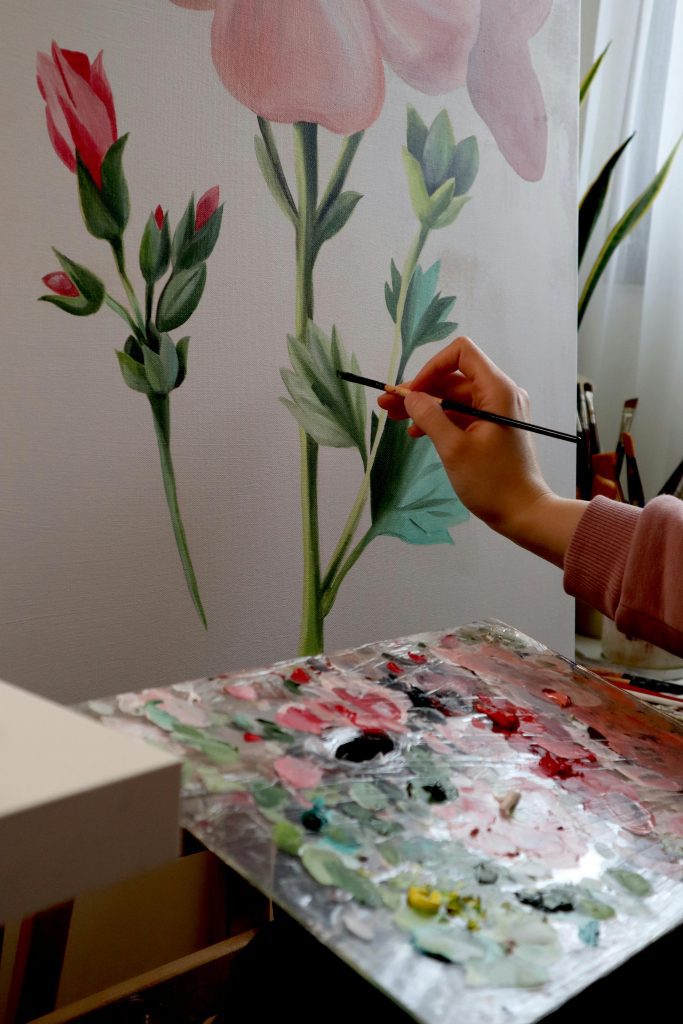How Create a Portfolio That Speaks to All Your Audiences

Your Portfolio Isn’t Just for One Kind of Viewer
Your art portfolio is more than a digital flipbook of pretty things. It’s your handshake, your voice, your invitation into a world only you can build. But here’s the curveball, every person who stumbles across your work sees it with different eyes. A gallery owner might zero in on technique, a buyer might search for connection, and a fellow artist might look for experimentation. How do you cater to all these minds without losing your own artistic soul?
That’s the tricky part. And also the beautiful part. Your portfolio can be fluid without being chaotic. It can whisper intimacy to one viewer and shout confidence to another. The key is understanding who you’re talking to, and organizing your work so each person finds something to hold onto. So let’s roll up our sleeves, artist-to-artist, and untangle how to create a portfolio that speaks to many without losing your voice.
1. Start with the “Why” Before the “What”
Before you upload another image or rename another file, take a breath and ask: Why are you building this portfolio? Are you applying to a residency? Hoping to sell your work? Wanting feedback from peers? Each reason calls for a slightly different story.
When you know the purpose, you’ll start curating with confidence instead of just guessing. For instance, if you’re applying for a grant, you’ll want to highlight growth, process, and clarity. If you’re wooing buyers, storytelling and emotional resonance matter more. Different goals, different vibes.
Once you clarify your “why,” everything else becomes easier. You’ll know what to include, what to leave out, and how to guide your audience’s eyes. A clear purpose also helps reduce overwhelm, especially when you’re staring at 300 images wondering what to do.
You don’t need to build 10 different portfolios. One can work beautifully across contexts, as long as you’re strategic about navigation and layout. Think of it like a modular home, same structure, different rooms.
Still not sure what your main “why” is? Try writing a one-paragraph mission statement. It doesn’t have to be fancy, just honest. Something like, “This portfolio shows how my practice explores memory and time, and it’s designed for curators who value experimentation.” Boom. Now you’re anchored.
And guess what? That one paragraph can also become your artist statement intro, a grant blurb, or even your Instagram bio. Multipurpose wins all around.
2. Know Who You’re Talking To, And What They Care About
Here’s where a little empathy goes a long way. Different viewers bring different curiosities. A gallery rep might flip through your CV first. A collector might linger on your color palettes. An art student might binge your sketchbook section. So who are your people?
Start by listing the top three audience types you’re building for. Maybe it’s curators, buyers, and workshop organizers. Then write down what each person is usually looking for when they review an artist’s work. Spoiler: it’s rarely just “beautiful art.” They’re scanning for alignment, originality, or clarity.
Once you know that, organize your homepage or portfolio menu with them in mind. A curator might appreciate a section titled “Exhibition Highlights,” while buyers might love one that says “Available Works” or “Shop My Series.” Don’t just think in categories, think in questions your audience is trying to answer.
Still worried you’ll alienate someone by organizing too clearly for one group? You won’t. Thoughtful clarity never turns people away, it draws them in. It shows you understand your audience, and you’re not trying to be everything to everyone.
And remember: most people skim. Make their journey easy. The faster they find what they’re looking for, the more time they’ll spend falling in love with your work.
A good trick? Watch someone scroll through your portfolio without context. See what they click first, what they skip, and what they linger on. You’ll learn so much.
3. Curate, Don’t Dump, Even If You Love It All
This is the hard one. We love everything we make. We remember the late nights, the breakthroughs, the spilled ink, the feedback that changed everything. But to the viewer? Not every piece is doing you a favor.
Curation is love in action. It says, “I respect your time and attention, so I’m showing you the best, clearest version of my vision.” You don’t have to hide your weird experiments or that old-but-good drawing, but you do need to ask: does this serve my story?
Look for work that speaks cohesively, even if the media varies. Can a stranger scroll through and sense your evolving themes or techniques? Can they feel the narrative thread, even loosely?
And don’t be afraid of trimming. If you’re unsure about a piece, try this: remove it temporarily. Does the rest of the portfolio feel stronger without it? That’s your answer.
If you truly can’t let go of a bunch of pieces, consider a “process” or “archive” section, clearly labeled. That way, your core work still shines, and the rest gets to live in a supportive role.
Also, keep in mind that different audiences have different tolerance levels for quantity. A gallery director might welcome a 15-piece series. A casual viewer? Five scrolls and they’re done. Less is often more.

4. Make Navigation Foolproof,
No one should need a digital map to get around your portfolio. If your viewer has to click 10 times just to find your contact page or your work gets buried behind cryptic menus, they’ll bounce. Fast.
The goal is frictionless navigation. Imagine you’re guiding someone through a museum tour, what would you show first? Where would you pause and explain? Your menu should reflect that journey.
Use clear labels like “Recent Work,” “About,” “Contact,” “Shop,” or “CV.” Avoid artsy phrases like “My World” or “The Void.” That might sound poetic, but when someone’s skimming for your bio, it’s confusing.
Also, test your site on different devices. Mobile users often make up 50% or more of traffic. What looks elegant on a laptop might be clunky on a phone. Scroll through your own site like a stranger would, critically and impatiently.
And here’s where I recommend the Women in Arts Network Website . It’s clean, professional, and built specifically for artists. The template is intuitive and audience-friendly, perfect if you want different people to land exactly where they need to without confusion. You’ll get ease and elegance, minus the tech headache.
Lastly, make sure every page ends with a way to contact or follow you. If someone loves what they see but doesn’t know how to reach you, that’s a lost opportunity.
5. Use Storytelling to Bridge Different Worlds
Art speaks for itself, sure, but a little storytelling can turn a quiet nod into a “tell me more.” Viewers crave context. They want to know what sparked that series, why you chose those materials, what you were feeling when you made that piece. Not every viewer will read every word, but for those who do, your story becomes the sticky thread that holds them close.
Different audiences appreciate different types of stories. Curators often love conceptual depth and research. Collectors tend to gravitate toward emotional resonance or personal backstory. Fellow artists might enjoy technique breakdowns and material choices. If you can sprinkle in all three styles without overwhelming the viewer, you’ll appeal to a beautifully wide range.
But don’t think this means writing a novel for each piece. Even one or two short lines of context under a work can make a big impact. Something as simple as, “This series explores what remains after memory fades,” can shift how a viewer receives it.
Consider adding an “Inspiration” or “Behind the Work” section to your site, especially for series-based work. This gives you space to expand without crowding the individual artwork pages. You can even link short audio clips, process videos, or journal snippets if you’re feeling fancy.
Storytelling is also a powerful tool for accessibility. It opens the door for people who might feel intimidated by art-speak or abstract concepts. A single line that says “I made this after losing someone I loved” can resonate across age, culture, and background in ways that formal language can’t.
And remember, your tone can mirror your personality. If you’re funny, be funny. If you’re quiet and reflective, let that show. Your voice is a vital part of your brand, and it helps bridge the gap between you and people you’ve never met.
6. Group by Series, Not Just Medium or Date
We’re taught to organize things chronologically or by medium, drawings here, paintings there, digital work on its own island. But what if your most powerful connection points aren’t based on what you used or when you made it, but why?
Series-based organization lets you tell micro-stories within your larger portfolio. It invites viewers into the world of a theme or concept, rather than making them jump between scattered ideas. Think of it like a museum show: grouped installations with emotional or conceptual ties.
For example, your “Postcards from Quarantine” ink series might have more in common with your “Lonely Objects” oil paintings than your latest digital collage, even if the mediums differ. A viewer tracking emotional themes would appreciate seeing those pieces together.
This style of organization also helps with audience recall. A curator can reference “the liminal space series” instead of “the blue painting with the door,” making your work easier to talk about and remember.
If you’re worried about pieces fitting into more than one series, that’s okay. You can duplicate them between sections or mention cross-references. Just keep the user journey clean and intuitive.
And don’t be afraid to name your series in bold, thoughtful ways. Even something like “When the Sky Went Quiet” feels inviting. It’s poetic, but specific enough to intrigue multiple kinds of viewers.
7. Tailor Your Language
Writing for different audiences doesn’t mean changing your voice like a chameleon. It means modulating it slightly, like tuning a guitar string to a different key, not throwing out the whole instrument. The heart of your message stays the same; the packaging shifts just a little.
For academic or curator audiences, lean into clarity and structure. Avoid overly casual phrasing and define your terms if you’re using niche theory or references. Your goal here is to sound informed and intentional, not stiff.
For collectors or casual viewers, try warmer, more emotional language. Let your excitement peek through. Use metaphors or analogies to make complex concepts feel inviting. Think less “art critic” and more “coffee chat.”
Fellow artists appreciate specificity and process. You can afford to go a little nerdy here, talk about that time you mixed chalk with resin or how you layered three kinds of gesso just to achieve the right surface. They’ll love it.
That said, don’t write three bios or a different ‘about’ page for every audience. Instead, try layering your language. Start with a few universal lines, your themes, values, background, then offer optional sections like “process” or “philosophy” for those who want to go deeper.
You can also use layout tricks to guide readers naturally. A short, punchy overview in bold text followed by an expandable section marked “read more” keeps everyone happy. Skimmers get the gist. Deep-divers get the goods.
8. Offer Different Ways to Experience Your Work
Not every viewer consumes visuals in the same way. Some people love scrolling through a gallery. Others want to watch a time-lapse. Some prefer reading; others would rather listen. Offering multiple entry points makes your work feel more inclusive, and more memorable.
Start with the basics: high-quality images with zoom capabilities. Then consider adding process videos or short clips explaining certain works. Even a 30-second vertical video showing brushstrokes can pull people in emotionally.
Think about accessibility too. Use alt-text for all images, captions for videos, and legible fonts. This doesn’t just serve disabled audiences, it improves usability for everyone. Remember: curators scroll on subways, buyers browse late at night, artists skim in-between studio sessions.
For a deeper connection, consider offering downloadable PDFs of your portfolio (especially helpful for grant reviewers or gallery owners). Just make sure it’s mobile-friendly and doesn’t overload them with files.
You can also create separate “paths” for different visitors. For example, your homepage might offer three buttons: “Explore by Theme,” “Available Work,” and “Curator’s Picks.” This immediately invites people to self-select their journey.
The more agency your viewer has, the more likely they are to stay engaged. You’re not just showing work, you’re curating an experience that makes them want to linger.

9. Include Testimonials and Professional Endorsements Thoughtfully
Social proof is incredibly powerful, especially when you’re trying to build trust with a variety of audiences. Testimonials, endorsements, and even short quotes from past curators, collectors, or collaborators can elevate your portfolio from “interesting” to “credible.”
Don’t be shy about asking for feedback from people you’ve worked with. A line like “Working with Samira was a dream, her sense of color is truly unique” holds weight, especially if it comes from someone respected in the art world.
Choose testimonials that align with your goals. If you’re applying to residencies, a note from a past mentor or director can boost your credibility. If you’re trying to land commissions, happy client feedback becomes gold. It shows real-world value.
You don’t need a wall of quotes. Two or three well-placed lines can be more impactful than ten generic blurbs. Place them near relevant work or at the bottom of your About page as quiet validation.
Make sure to include names, roles, and affiliations (with permission) so the praise doesn’t feel anonymous or manufactured. If possible, link back to collaborators or institutions, it’s a nice professional touch and strengthens your network.
Testimonials aren’t for bragging, they’re little windows into how others have experienced you. And for new audiences, that glimpse might be exactly what tips them into trust.
10. Keep Evolving Without Overhauling
Your audience will evolve. Your style will shift. And yes, your goals might change from season to season. But that doesn’t mean you need to rebuild your portfolio from scratch every time the wind blows.
Instead, treat your portfolio as if it’s a living being. Schedule a check-in every 3–6 months. What feels outdated? What no longer reflects your voice or focus? What new work is missing? A simple refresh can go a long way.
One smart trick is to build in flexibility from the start. Choose a website builder or layout that lets you easily add, reorder, or hide sections without coding headaches. Again, the Women in Arts Network Website is ideal for this. Their template is specifically created for artist-led growth and easy tweaks as you evolve.
Consider keeping an “archive” section for past work you still love but no longer leads your practice. That way, viewers can see your progression without your current direction getting lost.
If you’re between bodies of work, don’t panic. You can highlight your process, experiments, or studies as “what’s in progress.” Many viewers appreciate transparency, it makes your practice feel real and ongoing.
Above all, don’t chase perfection. Aim for clarity, resonance, and ease.
You’re Not Trying to Please Everyone, Just Welcome Them
Organizing your portfolio for multiple audiences doesn’t mean shapeshifting or self-erasing. It means being intentional, welcoming, and strategic. It’s about opening different doors for different people, while staying rooted in your own studio floor.
Think of your portfolio as a cozy, well-lit gallery with many rooms. Some will spend time in just one. Others will wander through all of them, curious and delighted. Either way, they’ll leave with a deeper understanding of you, and that’s the point.
So take your time. Experiment. And ask for feedback.
